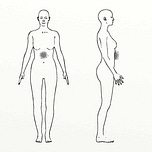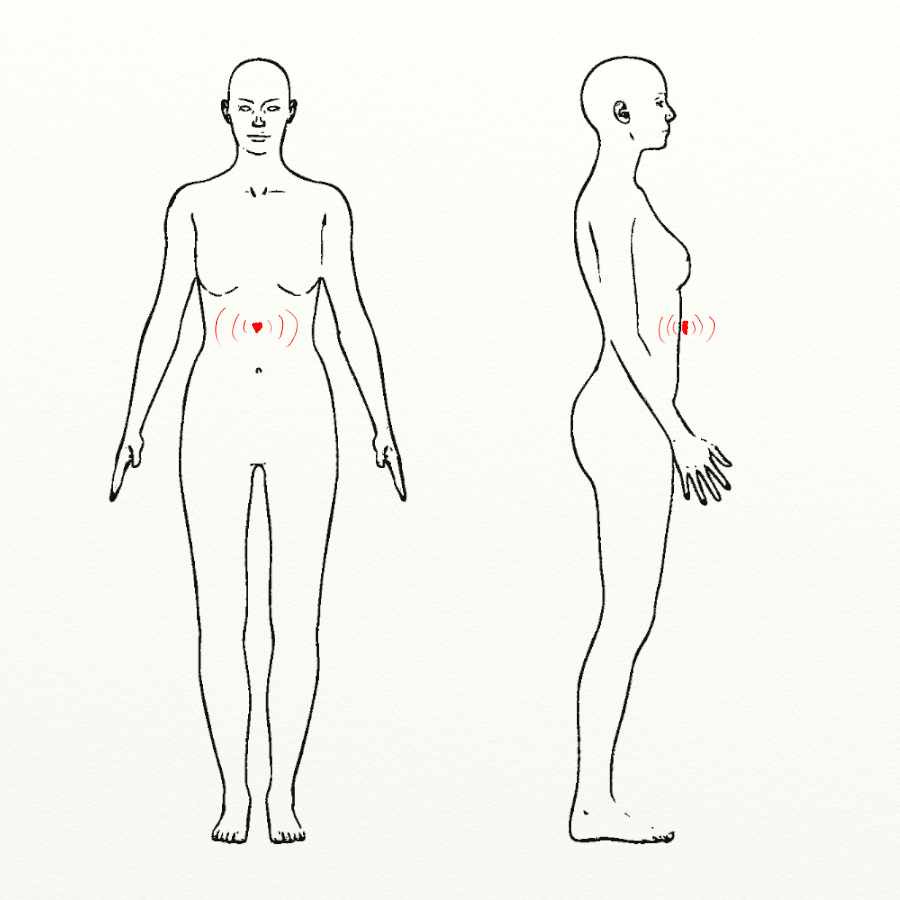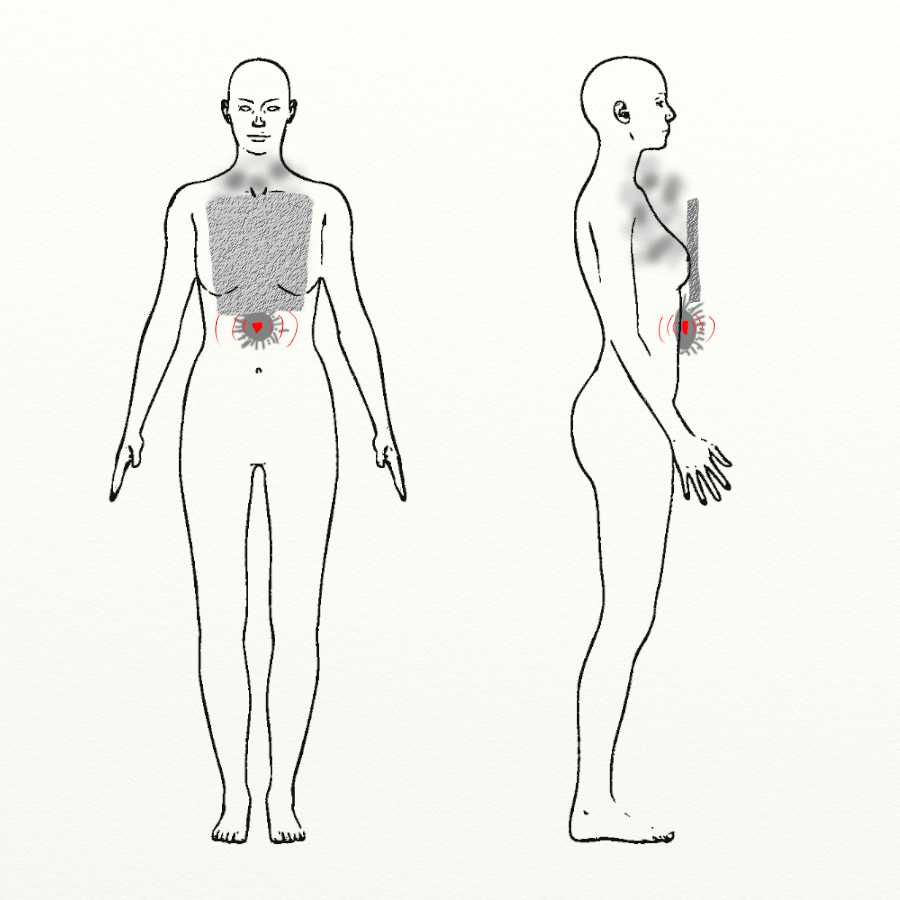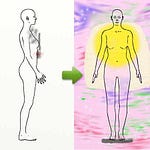Previous post in this series:
Next post in this series coming in a few months.
This is the audio, transcript, and commentary for Part 3 of a single, self-contained demo session with Susan, a participant in a small training I conducted in early 2017. Make sure to take a look at Part 1 and Part 2 to give context for this one.
As before, I’ve provided two versions of the transcript. The first is generated by Substack, synced with the audio, and is verbatim. Click the transcript button above and use it to navigate through the session. A lightly edited, more readable version of the transcript is below, along with my comments to give you more info about what’s happening.
Here in Part 3, we will dive right into mapping Shame. And once again, as we do so, yet another part will reveal itself — the fourth and final feeling state mapped in this session.
(NOTE: Susan — not her real name — gave me her full permission to share her session with the public. I am immensely grateful for her offer.)
Let’s go!
Mapping Shame
J: All right, so, the Shame. If you were to say that the actual, felt experience of this Shame was located somewhere in or around your body, where would you say that seems to be?
S: Right in my solar plexus.
J: Ah hah.
S: And it's about the size of my fist.
J: OK. Great. And does it seem more like a solid, liquid, gas, light, energy…?
S: Well, just what I said, it seems like this little porcupine.
J: All right.
S: You know, so it's not solid like hard, but if you would think like a little porcupine body. It's soft, but there is substance to it.
J: Right. And with spikes.
S: Spikes, yes. It's totally, totally all the spikes.
J: In every direction.
S: Well, it's like if I were lying down, it's like it would be sitting on my solar plexus.
J: OK.
S: So, like its little feet and tummy would be next to my body, but everything, like if anybody was going to come close, they would only feel spikes.
J: Right. All right. And what temperature does little porcupine-y thing seem to be?
S: Just body temperature. It's like the same temperature as me.
J: Ah hah. And what color?
S: Gray. Whatever color porcupines are.
J: OK.
S: Kind of gray.
J: Kind of gray. A darker gray or lighter?
S: A little darker, like the dark gray spots in the fog…
J: Mm hm.
S: That color gray.
J: OK. And is it moving in any way?
S: Nope.
J: Any force or pressure?
S: Nope. Just sitting there.
J: And if you listen internally, do you notice any inner sound?
S: Kind of whimpering. Almost like a little pain…
J: Almost like a…?
S: Like if it had a stomach ache or something. You know? Just little whimpers of pain.
J: OK. Anything else to notice about what this feels like?
S: Well, like if its little feet had claws or toenails, it's like I can feel little, almost like little pricks.
J: So almost like little pricks. Where do you feel that?
S: On my tummy, where it's sitting.
J: OK. And from this place, from that feeling, what seems true, or real, or important to this part of you?
S: Well, just like when you do the drawing, it's going to be right under the edge of the steel plate, it feels like it's the “what's underneath.” Even though it's on the outside of my body, it feels like it's what's underneath everything else that's going on.
J: Ah. What's its intention or perspective or attitude or belief, about you, about the world, about love?
S: It really doesn't want to be noticed or discovered. That's all the prickliness, the quills. It's like, “Don't come close to me, don't notice me."
J: Mm hm. OK. Anything else?
S: That seems to be the main thing.
J: OK.
I’m going to guess that you never expected “shame” would look like this. One of the things you learn pretty quickly doing this practice is to lay down your expectations. The words we use to point to our most private feeling experience are inadequate and clumsy. Fieldwork maps, in contrast, help to bring out the actual, felt experience lying beneath those clumsy words.
Whether you are facilitating someone else or exploring your own interior, I can’t emphasize too strongly the importance of holding the primacy of direct experience over any common (or therapeutic) language interface to that experience. The mapping process provides a more direct translation of the feeling state as it is experienced than any culturally-shaped language we have available. Trust the maps. Hold the labels loosely. Every single person, and every single feeling state within each person, is utterly unique. Support the explorer (and yourself) in maintaining an open, curious attitude to what they will discover, and hold them in a space in which they are free to generate their own unique interpretations and understandings of their experience as it emerges into more tangible awareness.
The shape of this feeling state, with its defensive spikes pointing out toward anyone who might draw close, suggests to me there is another state to be found. Every feeling state has one single function. More complex patterns come into being through the interaction of multiple states, each carrying out its individual task. Defense is one function. What is necessary to defend is a separate function. Each of these will be anchored in its own unique feeling state. I’ve noted this to myself, and will bring Susan back to it soon to discover what else might be there.
Drawing Shame
J: All right. So I'm going to leave it on the same color gray. Does that make sense?
S: Yep.
J: All right. And I think I'll zoom in a little bit further. And let's just see where that No! comes to an end. So it's gotta be right there.
S: Yes, right there.
J: And I'm going to start with, just kind of draw the body a little bit. And then we'll put our spikes on it…
S: Yes…
J: And let me draw this over here… So it's going to be… About like that?
S: Yes.
J: OK. And then let's see if this make sense… Does this look spiky enough?
S: Yeah. Yeah.
J: I mean, I could do it a little bit differently, but this is probably OK, right?
S: Yes.
J: Lots of them.
S: Yes. Lots and lots of these little spikes. It's like if you put your hand anywhere close to it, you're going to encounter pokes.
J: Yeah. OK. How does that look?
S: That looks just right.
J: All right.
When I facilitate fieldwork, I use two computers: a desktop computer to track the notes and the emerging structure of the feeling states, and a tablet for drawing. When I work with someone in person, I just hand them the tablet and they draw the image themselves. In those cases, we’re generally not talking while they are drawing. I’m including these little exchanges because it seems to bring the conversation more alive on the page.
Identifying Love
J: So. Now I have one more question for you about the Shame.
S: Sure.
J: If you bring your attention to the body part of it, and just scan through the center, do you notice anything? Is it the same kind of substance all the way through the center, or is there something else in there?
S: What immediately I saw when you said like scanning through its body, so it's like the part inside the quills, the spikes…
J: Mm hm.
S: I mean there was almost like this little red valentine heart in there, that, you know, it's the same substance or like it's soft like the rest of the body, so it's not like hard, but there was very much this little, I mean literally, almost like a valentine heart inside it.
J: Uh huh. OK. So what would you like to call that?
S: And I would just say love.
J: OK.
S: It's Love.
Aha! Just as I suspected. The hidden state being protected by all those spikes is a vulnerable little thing called Love.
Notice the chuckles here and while mapping the porcupine Shame. It’s quite extraordinary in this process that people are often able to engage with quite distressing feeling states and maintain enough of a safe and stable witness perspective as to have a sense of humor about it all.
I’ll just say, though, that this is not always the case. Sometimes fieldwork will lead to very heavy, dark places. While the mapping process does provide a measure of separation, facing and entering these places can be exhausting, especially when you’re working on your own without a facilitator. We’ll talk later in the book about strategies for managing your work in these more challenging territories. Check to confirm.
Mapping and Drawing Love
J: So I'm going to take you through mapping the Love. OK? What size would you say, the size of a quarter or something like that?
S: Yeah. So it fits easily inside the little porcupine that's the size of my fist.
J: Mm hm.
S: Maybe the size of a dime. No. Let's see. No, a nickel.
J: OK.
S: So half way between a quarter and a dime. A nickel.
J: All right. And if you were to say it has qualities of substance, what does that seem to be?
S: I don't know quite how to answer that, but it's definitely warm and pulsing.
J: Ah hah. So warm and pulsing.
S: So it is like a muscle. Like if the body is just like soft, you know? Like if you pet a kitty's tummy or something, how it feels very soft? This has a little more tone to it. But it is like a muscle because it's pulsing.
J: And what's the color of it?
S: Oh, you know, Valentine red.
J: All right.
S: Or lipstick red, whatever that… red-red.
J: OK. And is it moving? It's pulsing…?
S: It's pulsing. It's really warm. Not like melting warm, but like if you put your hand near it you would feel the warmth. You wouldn't be burned. You know, it's not like scorching hot. But noticeably warm.
J: Right. And if you listen, do you notice any inner sound?
S: Um, a heartbeat sound. You know, kind of a “kathump, kathump, kathump.”
J: All right. So sound of a heartbeat.
S: Yeah.
J: Anything else to notice about what this feels like?
S: It wants to grow. I mean, it's very eager to expand.
J: OK. And what seems true, or real, or important to this part of you?
S: Just this compulsion, this compelling urge to expand, to get bigger and bigger. Like it's really important, and it feels trapped and it wants to break through.
J: OK. Let's draw it. So the red, we're talking serious red here.
S: Yeah, like the reddest red you've got.
J: How's that down in the corner here? That works?
S: That looks good.
J: OK. And let's zoom in a little bit. So on this side… I think we'll just do a dot, something about like so. Is that good?
S: It is. And I don't know if you have like symbols and you can actually make it be a heart shape, but the color and the position are absolutely right….
J: Like this?
S: Yes, yes. That's it… Um, I don't know if there's a way to show it in the drawing, but it's pulsing. That's a really important feature of it.
J: Yeah.
S: The other things are relatively static.
J: We could indicate that pretty easily. How about if we do this…
S: But this is really moving.
J: Yeah. Let's try this… If I do something like this…
S: Yes, yes.
J: How's that?
S: Yes.
J: OK. So any other thoughts?
S: Nope. I think that's totally it.
Susan’s mapping of Love reveals a bit more of the essential nature of fieldwork mapping. Notice how precise she gets about the size of this Love. It’s the size of a nickel, not a dime and not a quarter. That’s pretty darned precise.
How is this possible? Most of us have a common experience of feeling as vague and nebulous. But when we bring the new lens of virtual materiality to the task, we find ourselves bringing incredible precision to our discernment. (Some people like Susan do seem to have a higher resolution in their feeling perception than others.) In addition, we seem to be able to enter that virtual world and interact in order to gather even more detailed information, as when Susan describes the temperature, “If you put your hand near it you would feel the warmth. You wouldn’t be burned.” What’s going on here?
I believe this represents an opportunity for a more advanced cognitive neuroscience to investigate, maybe now, maybe a number of years in the future. For now, I like to think of it like this:
When we enter consciousness as an infant and even before we are born, our first awareness is drenched in and infused with materiality. At first we experience the liquid and solid environment of the uterus and our own bodies lying undifferentiated (to us) within it. Then birth, and the sharp boundaries that emerge between skin and air, skin and skin, milk and tongue, and all the myriad substances surrounding and encompassing us.
This direct apprehension of materiality is our first consciousness, and I believe remains the foundation for all our consciousness. Our brains have the capacity to perceive this surrounding materiality and to map our own bodies quite precisely in relation to it. Further, we have the capacity to extend our own body map to include a toy or hammer in our hands as if it were an extension of our embodied selves. We adjust our sense of inertia, momentum, center of gravity and other properties to incorporate a jug of milk, a hula hoop, a kid sister on our shoulders, and to move as if we were one with the extension.
I believe this capacity is employed in generating our feeling sense. A self-aware, conscious agent requires certain fundamental functions to be handled if it is to succeed in navigating the world. It must differentiate self from other, for example. It must manage the differences between the array of possible actions, the current state or motivation, a desired outcome, and ongoing guidance of specific actions chosen, with a responsive feedback about the results of those actions in the world.
In fieldwork, (and this is jumping quite far ahead in our journey, but so be it), we see these functions clearly represented in the qualities and behavior of specific feeling states. Or more specifically, we see patterns show up again and again in which feeling states anchor these functions. It is as if the virtually generated “things” of feeling states become anchors for these cognitive functions.
(Ah, there is so much to share with you here! Forgive me for jumping ahead.)
OK, so back to the dialog. At the end, Susan clearly indicates that the Love has a strong motivation to expand. My assessment is that the Love has a natural impulse to grow and expand, but is contained by the Shame. Apparently, for the Shame in its current state, an expanded Love would be intolerable. Perhaps at some point in the past, Susan’s loving led to something painful, and in order to avoid that pain it seems important to keep the Love confined. (We’ll learn more about this in Susan’s reflections a month after the session.) Most likely, then, we can consider the Shame to be the pivot for this cluster of four states. I suspect we’ll probably start the moving process there after we draw Love.
Before we move on, let's look at all four of these images overlaid upon one another so you can see the structural relationships. This kind of tight interconnection is what we can expect when mapping related feeling states.
What’s Next
Later this year, I will be laying out full instructions for the fieldwork moving practice. When that is complete, I’ll come back to finish Susan’s session with the recording and transcript of our working through moving each of these four parts to their ideal states, and we’ll look at the impact of this session on Susan’s life experience a month or two later.
For now, I hope you’re getting a more clear idea of just what we’re getting ourselves into here. Fieldwork mapping takes us into a new territory unlike any we have encountered. In coming weeks, I will be laying out the first steps in the science of what is revealed by this precise observation of the virtual material properties that form our experience of feeling.
Please do let me know your thoughts and questions in the comments, and feel free to reach out for more involved conversation if you like. And do subscribe if you haven’t already!













